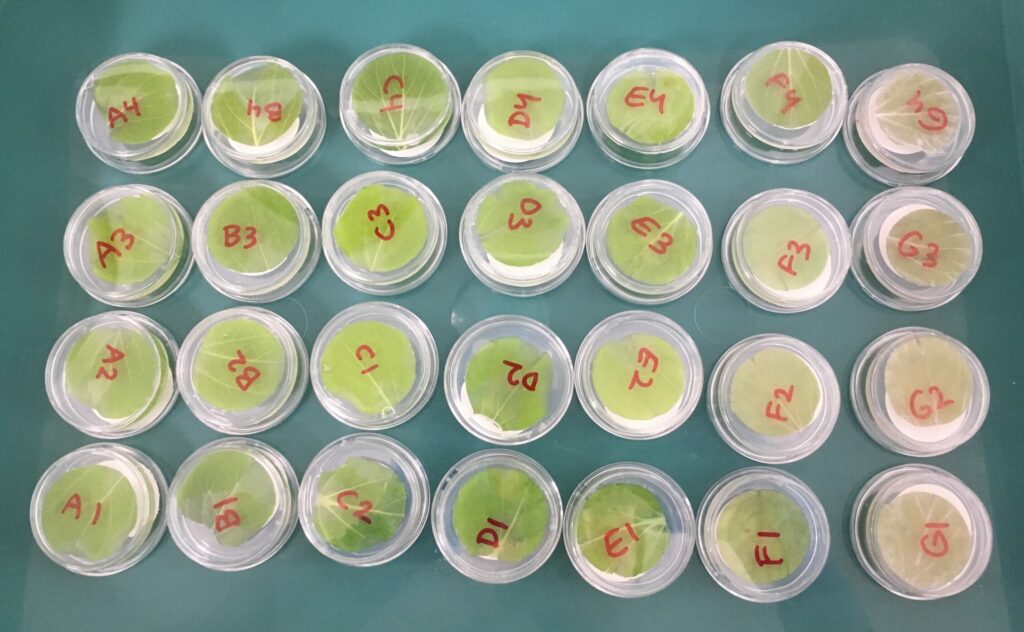The resistance of green peach aphid (Myzus persicae, GPA) to numerous chemical mode of action groups makes it an ongoing management challenge. In Australia, GPA has evolved high-level resistance to synthetic pyrethroids and carbamates, and low-level resistance to organophosphates and neonicotinoids. Quite recently, low-level resistance to sulfoxaflor has also evolved in some Australian field populations.
Research has now found populations of GPA with resistance to spirotetramat, the active ingredient in Movento® 240 SC Insecticide, as well as several generic products containing the same active ingredient. Spirotetramat, a Group 23 insecticide, is an important tool in GPA management in vegetable crops in Australia.
Discovery of new resistance
This discovery was made through collaborative research between Cesar Australia and the University of Exeter (UK), led by Associate Professor Paul Umina, Director of Cesar Australia. This research was a co-investment by Bayer Crop Science and the Grains Research and Development Corporation (GRDC).
“Resistance to spirotetramat has been confirmed in a small number of GPA populations collected from Queensland vegetable crops, and importantly, this resistance has been shown to persist after multiple generations of culturing in the laboratory, demonstrating there is an underlying genetic basis”, Associate Professor Umina.

Spirotetramat resistance in GPA has not been found in any other country, despite this product being widely used to manage GPA in a range of crops around the world.
“Clearly, there is something that we are doing in Australia that is selecting for resistance in this species, which really should be looked at.”
Correct use of chemicals
Troy Mulcahy, Bayer Crop Science Market Development agronomist based in Victoria, recommends Movento® is applied early before pest numbers build up. For best results, Movento® should be applied as two sprays 7-10 days apart to target a single generation of aphids for the most effective control.
Research has demonstrated that the correct adjuvant (e.g. Agridex®, Hasten®) is essential to achieve high level pest control when using Movento®. Without the correct adjuvant, poor product performance will result.
“Thorough coverage is also critical, so spray booms need to be set up to deliver the chemical where the aphids are located and growers should pay attention to dust and honeydew on the leaf as these factors can all reduce product performance”, Mr Mulcahy.
High water volumes, correct nozzle selection and appropriate ground speeds will help to ensure Movento® gives the expected efficacy. It is critical that the full label rate is used, as lower rates will often be insufficient and only serve to increase selection pressure for further resistance.
“We know from this research that the resistance mechanism present in these GPA populations results in cross resistance to other Group 23 insecticides”, Mr Mulcahy.
Reducing the risk of resistance
In order to limit the spread and restrict the further evolution of resistance it is important that Movento® and other Group 23 insecticides are used responsibly within a framework of Insecticide Resistance Management.
“While Movento® remains a highly effective means to control GPA in many parts of Australia, this discovery serves as an important reminder to use the product judiciously”, Associate Professor Umina.
For a species like GPA, which has a high propensity to evolve new resistances, this means only spraying insecticides when absolutely needed and rotating insecticides from different mode of action groups in those instances where multiple sprays are required in a single season.
Growers are urged to keep a close eye on their crops this year and to contact their local Bayer Crop Science territory manager if unsatisfactory aphid control is observed following the application of Movento®.
More information
Access the full paper published in Pest Management Science
If unsatisfactory aphid control is observed, contact a Bayer Crop Science Territory Manager. You can find your local representative here.
Acknowledgments
This was collaborative research between Cesar Australia and the University of Exeter (UK) and co-investment supported by Bayer Crop Science and the Grains Research and Development Corporation (GRDC). We thank Troy Mulcahy, Bayer Crop Science Market Development for contributions to this article.
Cover image: Photo by Cesar Australia
